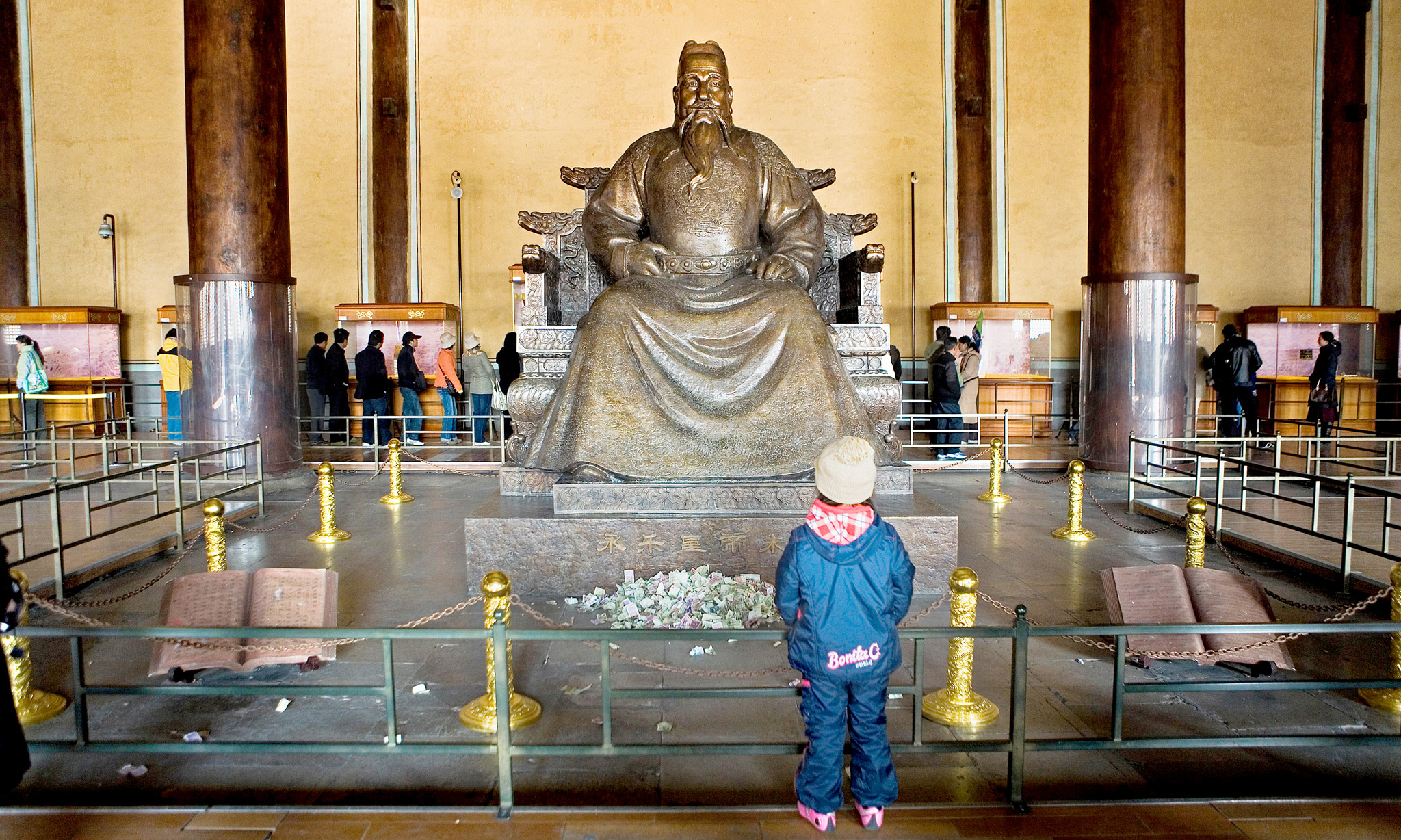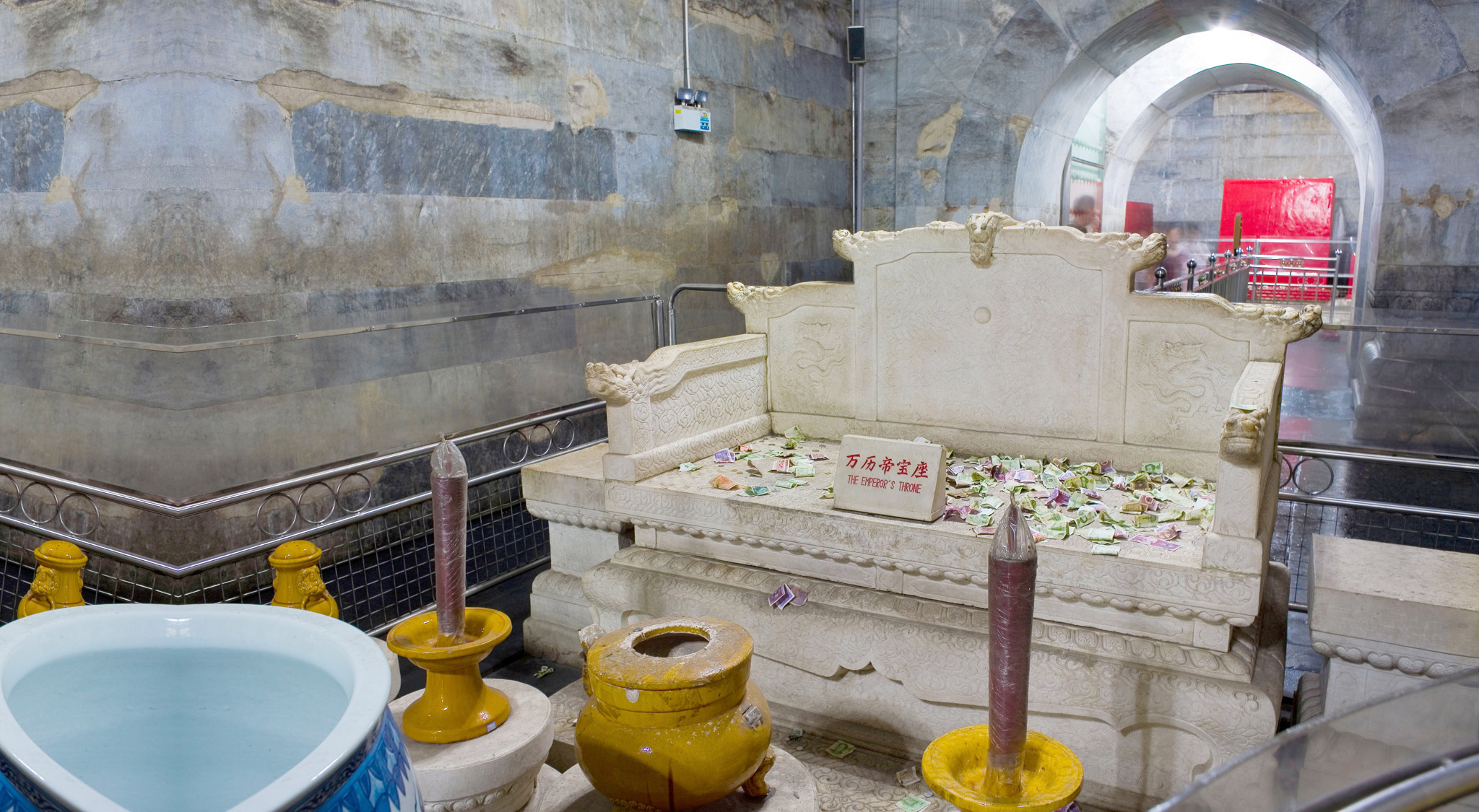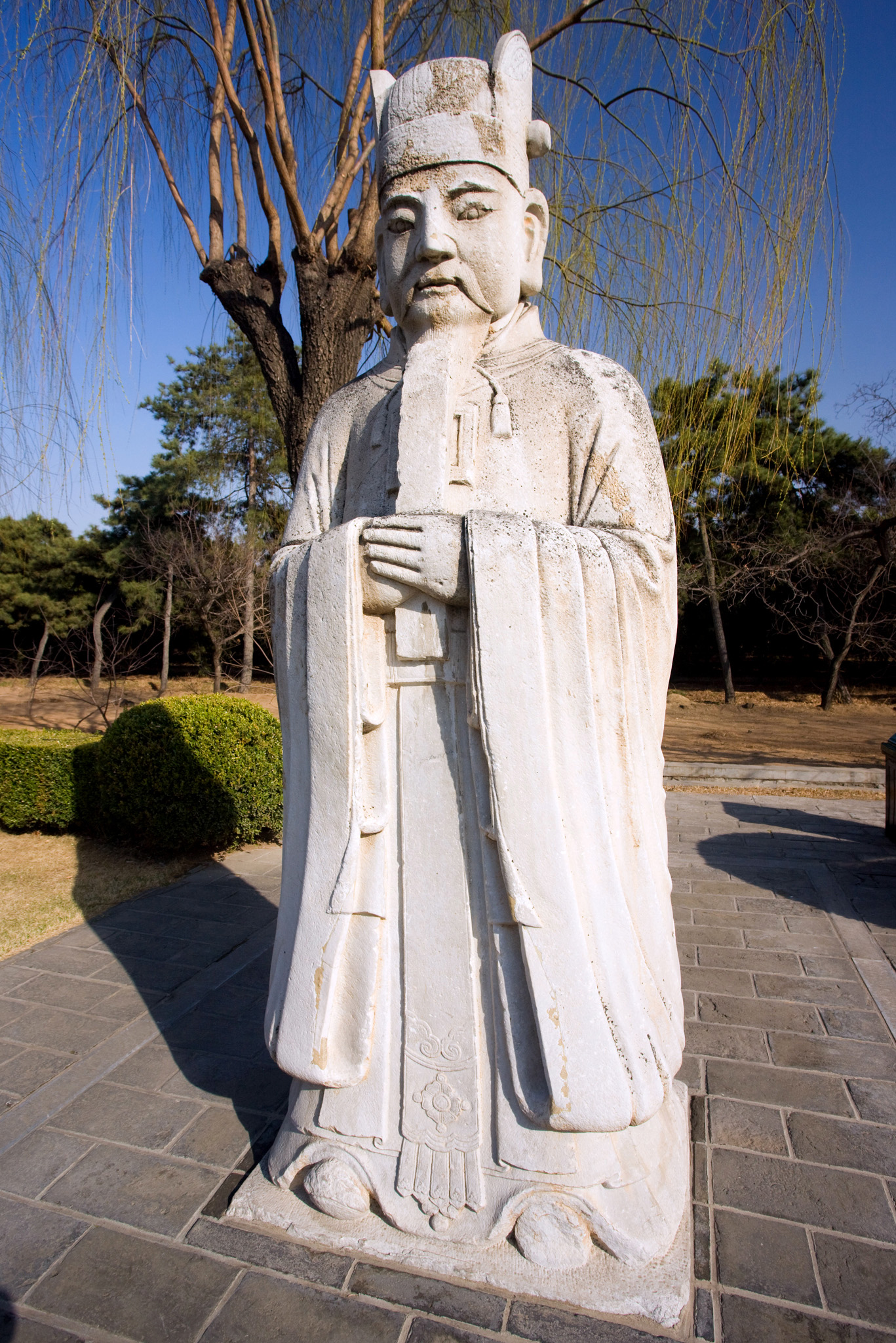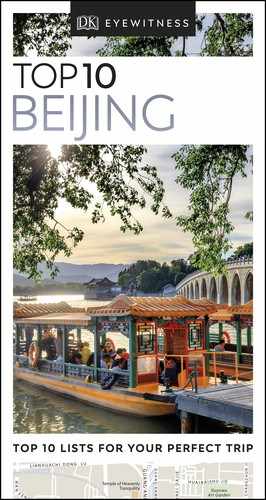
MING TOMBS
The resting place for 13 of the 16 Ming-dynasty (1368–1644) emperors, this is China’s finest example of imperial funerary architecture. The site was chosen because of its auspicious feng shui alignment: a ridge of mountains to the north cradles the tombs on three sides, protecting the dead from the evil spirits carried on the north wind. The tombs are spread over 15 square miles (40 sq km). Three (Chang Ling, Ding Ling, and Zhao Ling) have been restored and are often busy. The others are not open to the public.

Ming Tombs
NEED TO KNOW
![]() 30 miles (45 km) NW of Beijing • 6076 1424 • Subway to Changping Dongguan station, then bus 314 to Changling or Dingling station • www.mingtombs.com • Open Apr–Oct 8am–5:30pm daily; Nov–Mar 8:30am–5pm daily • Adm Chang Ling ¥45 (¥30 off-peak), Ding Ling ¥60 (¥40 off-peak), Zhao Ling ¥30 (¥20 off-peak); Combo ticket ¥130 (¥100 off-peak)
30 miles (45 km) NW of Beijing • 6076 1424 • Subway to Changping Dongguan station, then bus 314 to Changling or Dingling station • www.mingtombs.com • Open Apr–Oct 8am–5:30pm daily; Nov–Mar 8:30am–5pm daily • Adm Chang Ling ¥45 (¥30 off-peak), Ding Ling ¥60 (¥40 off-peak), Zhao Ling ¥30 (¥20 off-peak); Combo ticket ¥130 (¥100 off-peak)
- The Ming Tombs can most conveniently be covered as part of a trip to the Great Wall at Badaling. Many hotels are able to arrange tours to the site.
- Bus 872 leaves Desheng Men Bus Terminal every 10 minutes (9:15am–4:15pm) to Changling and Dingling (¥10). The last return bus is at 3pm.
- There are snack kiosks available at the site.
1. Stele Pavilion
At the tunnel-like arch of the Stele Pavilion, the largest stele in China projects from the shell of a giant bixi (dragon-tortoise) and bears the names of the emperors buried at the site.
2. Memorial Arch
Marking the entrance to the site is a five-arched marble gate built in 1540. At 40 ft (12 m) high and more than 92 ft (28 m) wide, it is the largest of its kind in China, and boasts beautiful carvings.

The iconic five-arched marble gate
3. Spirit Tower
Rising up from the third courtyard of the Chang Ling complex, this tower marks the entrance to the burial chamber. It takes the form of an earthen tumulus girdled by a wall.
4. Ding Ling Treasures
A collection of precious artifacts and relics from the Wanli emperor’s tomb (the Ding Ling) have been placed in the Hall of Eminent Favor.
5. Chang Ling Tomb
The resting place of the Yongle emperor, builder of the Forbidden City and Temple of Heaven, is the oldest and grandest tomb. It is well restored, but the chamber where Yongle, his wife, and 16 concubines are buried has never been excavated.

A young visitor near the statue of the Yongle emperor
6. Ding Ling Tomb
This is the tomb of the longest-reigning Ming emperor, Wanli (1573–1620). His profligate rule initiated the downfall of the dynasty. His tomb took six years to build, and its impressive structure is representative of the emperor’s extravagant lifestyle.

Tomb of Wanli
7. Zhao Ling Tomb
This is the final resting place of the Longqing emperor (1537–72). The 13th emperor of the Ming dynasty, he gained the throne at the age of 30 and died six years later. The tomb has an attractive triple-bridge built over a stream. It is closed for renovation.
8. Hall of Eminent Favor
One of China’s most impressive surviving Ming buildings, this double-eaved sacrificial hall is the centerpiece of the Chang Ling tomb complex. It stands on a triple-tiered marble terrace and 32 gigantic cedar columns support its hipped roof.
9. Spirit Way
Part of the 4-mile (7-km) approach to the tombs, the Spirit Way is lined with 18 pairs of giant guardians – stone statues of imperial warriors, court officials, animals, and Chinese mythical beasts.

One of the giant guardian statues lining the Spirit Way
10. Ding Ling Burial Chamber
This is the only burial chamber to be excavated and opened to the public. It holds three red-lacquer coffins, belonging to Wanli and his two wives.
THE MING DYNASTY
The 276-year Ming (“brilliant”) dynasty rule was one of the longest and most stable periods in Chinese history. The founder of the Ming dynasty rose from humble beginnings via military successes to become emperor. He was succeeded by his grandson, who in turn was succeeded by his son, who proclaimed himself emperor Yongle (“Eternal Joy”). It was Yongle who moved the capital from Nanjing to Beijing, where he created a new city.
